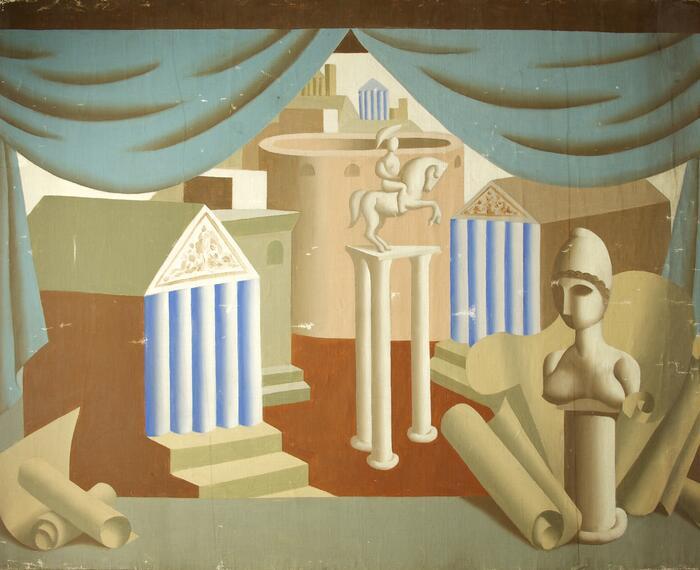

Madeline Knox (b. Grantham, Lincolnshire, UK 1890 - d. 1975) moved to London in 1906, briefly studying at the Lambeth School of Art. She went on to study at the Westminster School of Art in Vincent Square from 1907 to 1910, where she trained under Walter Sickert for her final two years. In 1909 she joined Sickert's etching class, and later that year helped him to set up an etching school at 209 Hampstead Road. When it moved to 140 Hampstead Road the school was named Rowlandson House, and painting and drawing were also taught. Sickert’s many commitments at this time made him ill, however, which meant that Knox was left in charge of the school. This, in turn, made her ill, leading her to leave the school in late 1910. Around 1911 Knox travelled to Canada where she lived until 1914–15. Upon returning to London, she met Arthur Clifton (1863–1932) who ran the Carfax Gallery where the Camden Town Group had held their three exhibitions in 1911 and 1912. The two later married. Knox exhibited with the New English Art Club in 1915 and held a successful solo show at the Carfax Gallery in October 1916, in which all the works were sold.
In 1925 Knox settled in Mersham in Kent where she gave up painting and drawing in favour of embroidery. She was commissioned in the 1930s by Mr and Mrs J. L. Behrend to embroider the altar frontal for the Sandham Memorial Chapel in Burghclere, Hampshire, where Stanley Spencer’s famous large-scale paintings can be found. Using fine natural linen embroidered with linen thread and green and gold silk thread, she created the frontal using colours to complement Spencer’s Resurrection of the Soldiers, on the wall behind the altar.